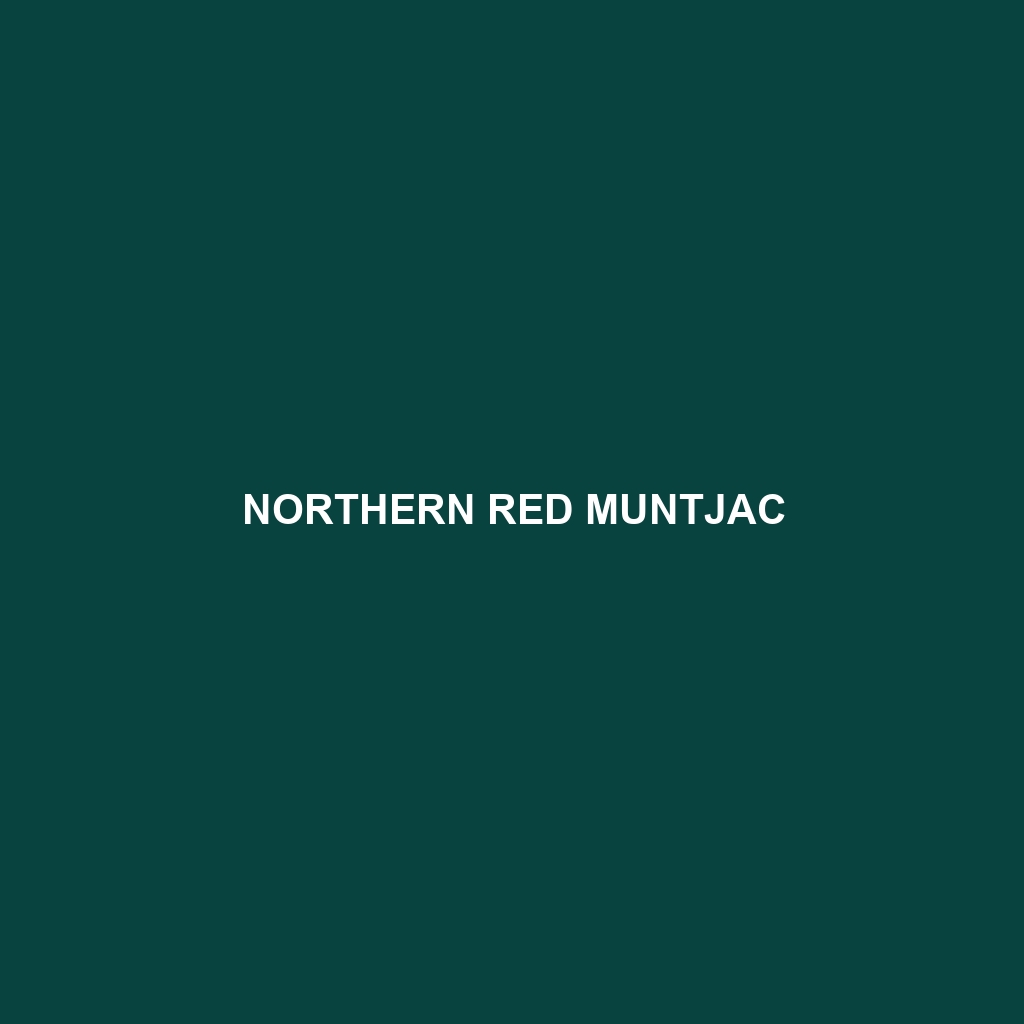Northern Red Muntjac
Common Name: Northern Red Muntjac
Scientific Name: Muntiacus vaginalis
Habitat
The Northern Red Muntjac is primarily found in the lush forests of Southeast Asia, particularly in regions such as northern India, Nepal, and parts of Bangladesh. This species thrives in dense, lowland forests and tropical rainforests, where it can find ample cover and food sources. Muntjacs prefer areas with thick undergrowth and are commonly seen in hilly terrains and forest edges, which provide both shelter and grazing opportunities.
Physical Characteristics
Northern Red Muntjacs are relatively small-sized deer, standing at about 60-90 cm (24-35 inches) at the shoulder. They possess a distinctive reddish-brown coat that features white markings on their face, throat, and legs, making them easily recognizable. One notable feature is their short, pointed antlers that can grow up to 15 cm (6 inches) in length. The males also have elongated canine teeth, which are used for defense and dominance displays. Their slender body and long legs enable them to navigate through the dense underbrush effectively.
Behavior
Northern Red Muntjacs are primarily solitary creatures, although they can often be spotted in pairs or small family groups. They exhibit a crepuscular activity pattern, being most active during the early morning and late afternoon. Known for their cryptic nature, these deer are excellent at hiding in their environment, using their keen sense of sight and hearing to detect potential threats. They communicate using a variety of vocalizations, including distinctive barking sounds, especially during mating season.
Diet
The diet of the Northern Red Muntjac is herbivorous, consisting mainly of leaves, fruits, and grasses. They are browsers, often feeding on the foliage of shrubs and young trees. Their selective grazing helps maintain the health of the forest ecosystem by controlling plant overgrowth and promoting biodiversity. This species is also known to consume bark and flowers, showcasing their adaptability in foraging.
Reproduction
Northern Red Muntjacs have a unique breeding behavior where they can mate throughout the year, although peak breeding seasons typically occur during the cooler months. After a gestation period of about 7 months, females give birth to a single fawn, which remains hidden in dense vegetation for the initial weeks of its life, reducing the risk of predation. Parenting roles are primarily taken on by the female, who provides care and protection for the offspring.
Conservation Status
The Northern Red Muntjac is currently categorized as “Least Concern” by the IUCN Red List. However, habitat loss due to deforestation and hunting pose significant threats to their populations in certain regions. Conservation efforts are essential to ensure their continued survival in the wild, emphasizing the importance of protecting their natural habitats.
Interesting Facts
One fascinating aspect of the Northern Red Muntjac is their ability to produce a wide range of vocalizations, including a unique siren-like call used during mating season. Additionally, they are one of the oldest living species of deer, with fossil evidence suggesting they have been around for several million years. Their adaptability to different environments makes them resilient in the face of changing habitats.
Role in Ecosystem
The Northern Red Muntjac plays a crucial role in its ecosystem as a herbivore, aiding in seed dispersal and contributing to the overall health of the forest. By feeding on various plants, they help maintain plant diversity and structure in their habitat. Their presence also supports the food chain, providing essential prey for larger predators within the ecosystem.
